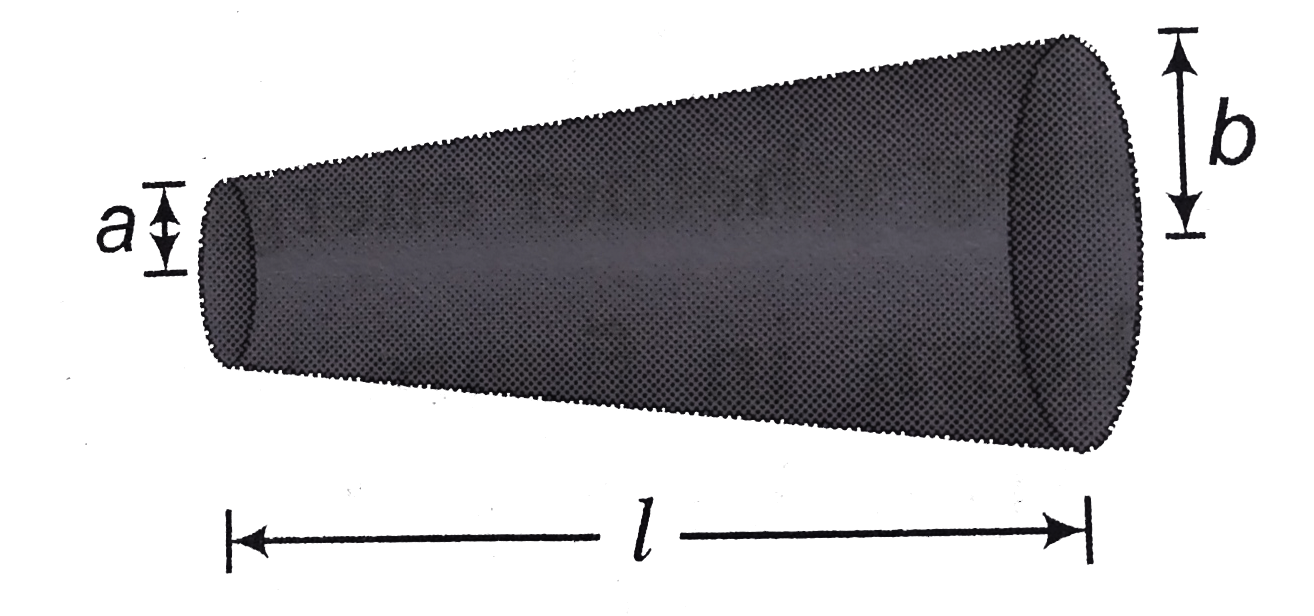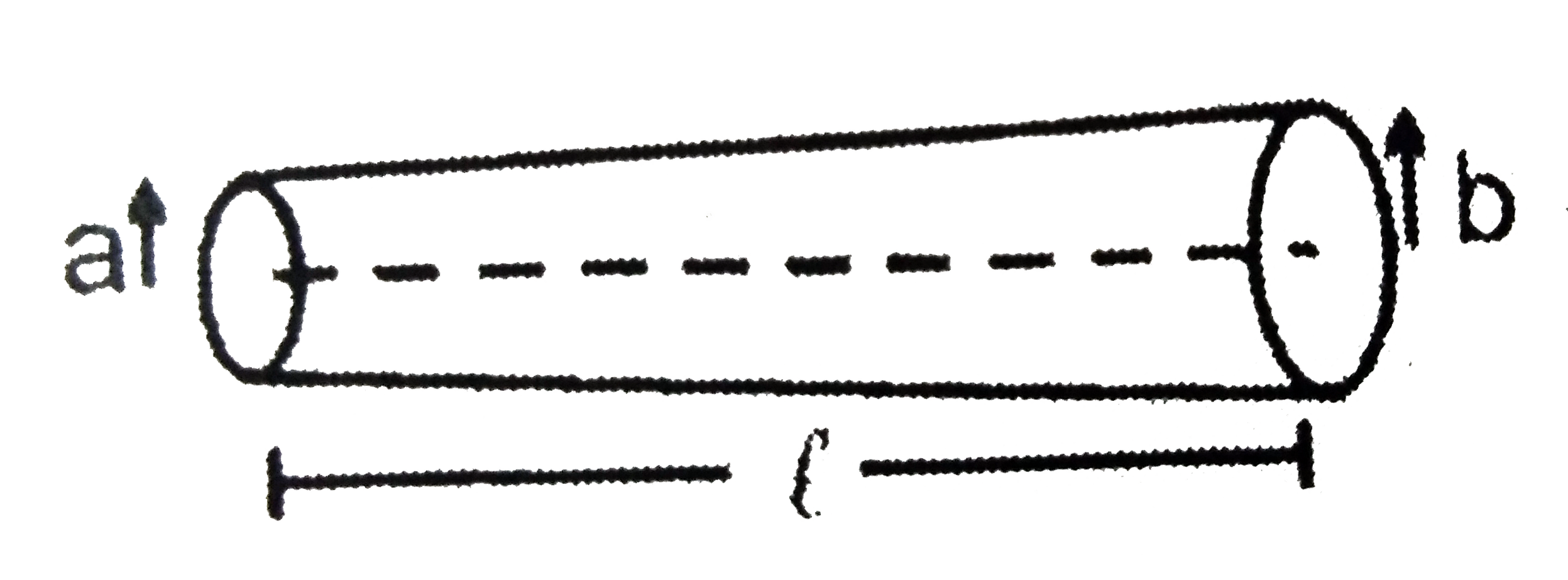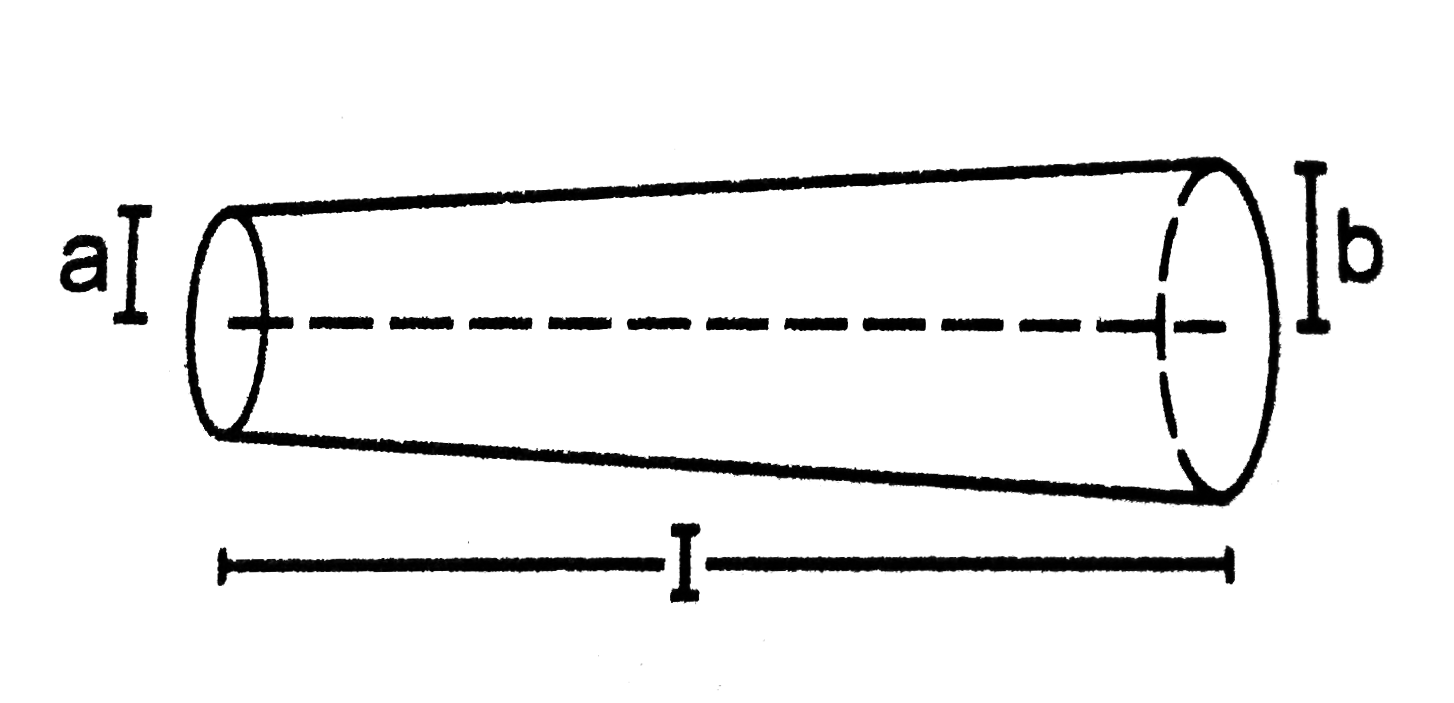Here is one metal object , whose electrical resistivity is ρ. The cross section of the object is circular and its radius changes linearly from a to b. The length of the object is l . Find the resistance of wire .

We know that resistance of a conductor is given by R=ρlA. But we can see that the cross section area of the object is continuously changing, so we cannot use this relation in one go. In such type of situations, we require integration. Let us select a segment of width dx at a distance x from one end of the object as shown in figure. The cross section area for this segment will be treated as a constant for length dx to apply the formula of resistance written above. Let r be the cross section radius of object segment. Then using similar triangles above the dashed line, shown in figure, we can write radius of the segment as
r−ax=b−al⇒r=a+b−alx ...(i)
Resistance of segment can be written as
dR=ρdxπr2 ..(ii)
All these segments are supposed to be connected in series, so we can integrate dR to get total resitance of this object. We can use radius r of the segment as variable of integration by replacing dx in equation (ii). To calculate the value of dx we need to differentiate equation (i). From equation (i): drdx=b−al⇒dx=lb−adr ...(iii)
Now substituting result from equation (iii) in equation (ii), we get:
dR=ρlb−adrπr2⇒R=ρlπ(b−a)b∫ar−2dr
Note that hte limits of integration are according to a selected variable r. According to x limits of integration are from 0 to L, but if we use r as the variable then the limits of integration are from a to b. Solving the integration we get the following:
R=ρlπ(b−a)[−1r]ba⇒R=ρlπ(b−a)[−1b−−1a]
⇒R=ρlπab
Topper's Solved these Questions
- CURRENT ELECTRICITYBook:MODERN PUBLICATIONChapter:CURRENT ELECTRICITYExercise:NCERT SOLVED (NCERT Textbook Exercises)
Explore 13 Videos
- CURRENT ELECTRICITYBook:MODERN PUBLICATIONChapter:CURRENT ELECTRICITYExercise:NCERT SOLVED (NCERT Additional Exercises)
Explore 11 Videos
- CURRENT ELECTRICITYBook:MODERN PUBLICATIONChapter:CURRENT ELECTRICITYExercise:CONCEPTUAL QUESTIONS
Explore 35 Videos
- ATOMS Book:MODERN PUBLICATIONChapter:ATOMS Exercise:Chapter Practice Test
Explore 16 Videos
- DUAL NATURE OF RADIATION AND MATTER Book:MODERN PUBLICATIONChapter:DUAL NATURE OF RADIATION AND MATTER Exercise:CHAPTER PRACTICE TEST
Explore 15 Videos
Similar Questions
A conductor of length l has a non-uniform cross-section. The radius of cross-section varies linearly from a to b. The resistivity of the material is ρ. Find the resistance of the conductc across its ends.

View SolutionA conductor of length l has a non-uniform cross-section. The radius of cross-section varies linearly from a to b. The resistivity of the material is ρ. Find the resistance of the conductc across its ends.

View SolutionFigure shows a conductor of length l having a circular cross-section. The radius of cross-section varies linearly from a to b. Find the resistance of the conductor. ltbtgt

View SolutionShown a conductor of length l having a circular cross section. The radius of cross section varies linearly form a→b. The resistivity of the material is(ρ).Assuming that b−a<<l,find the resistance of the conductor.

View SolutionShown a conductor of length l having a circular cross section. The radius of cross section varies linearly form a→b. The resistivity of the material is(ρ).Assuming that b−a<<l,find the resistance of the conductor.

View SolutionConsider a wire of length l, area of cross section A, and resistivity ρ with resistance 10Ω. Its length is increased by applying a force, and it becomes four times of its original value. Find the changed resistance of the wire.
View SolutionConsider a wire of length l, area of cross section A, and resistivity ρ with resistance 10Ω. Its length is increased by applying a force, and it becomes four times of its original value. Find the changed resistance of the wire.
View SolutionThere is one hollow pipe of metal of length L . The inner radius of the pipe is r1 and the outer radius is r2 . The resistivity of material of pipe is ρ. Find the resistance.
View SolutionConsider a wire of length l , area of cross-section A and resistivity ρ and resistance 15Ω. Its length is increased by applying a force on I and its length increases by four times of its original length. Find the new resistance in ohms of the wire.
View SolutionConsider a wire of length l , area of cross-section A and resistivity ρ and resistance 15Ω. Its length is increased by applying a force on it and its length increases by four times of its original length. Find the new resistance in ohms of the wire.
View Solution

